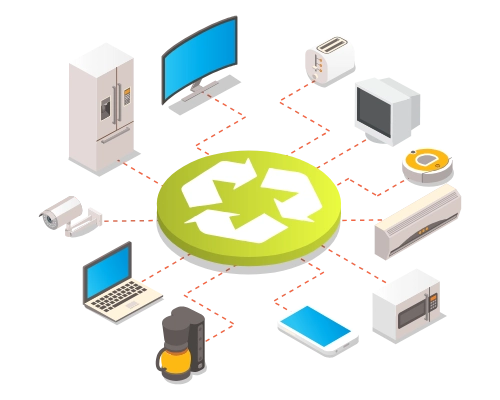Know more
What is e-waste?
E-waste includes discarded electronic devices like phones, computers, and televisions. Improper disposal leads to pollution of land, water, and air. Recycling e-waste correctly ensures environmental protection and resource recovery, helping create a sustainable future.
E-Waste in Numbers
- Global: 53.6 million metric tons generated in 2023, projected to reach 74.7 million by 2030
- India: 3.2 million metric tons of e-waste generated in 2023, ranking 3rd worldwide, with only 10% formally recycled.
- Maharashtra: Generates 19.8% of India’s e-waste, with Mumbai alone contributing 120,000 tons annually.
E-Waste Generators
- L1: Households & Residential Societies
- L2: Businesses & Corporate Sectors
- L3: Bulk Collectors (Retail chains like Croma, Flipkart, Amazon, etc.)
Impact of Mismanaged E-Waste
E-waste contains hazardous materials like:
- Lead: Affects the nervous system and reproductive health
- Mercury: Damages kidneys and accumulates in aquatic life.
- Cadmium: A known carcinogen that affects the kidneys.
- PAHs (Polycyclic Aromatic Hydrocarbons): Linked to lung, skin, and bladder cancer.
Why Responsible E-Waste Disposal Matters
- Ensures regulatory compliance (Form 6, Green Certification, NAAC specifications).
- Provides monetary benefits through proper e-waste disposal.
- Supports a circular economy by promoting reuse, repair, and recycling.
- Contributes to India’s net-zero carbon emissions goal.
- Helps in environmental conservation and sustainability.


